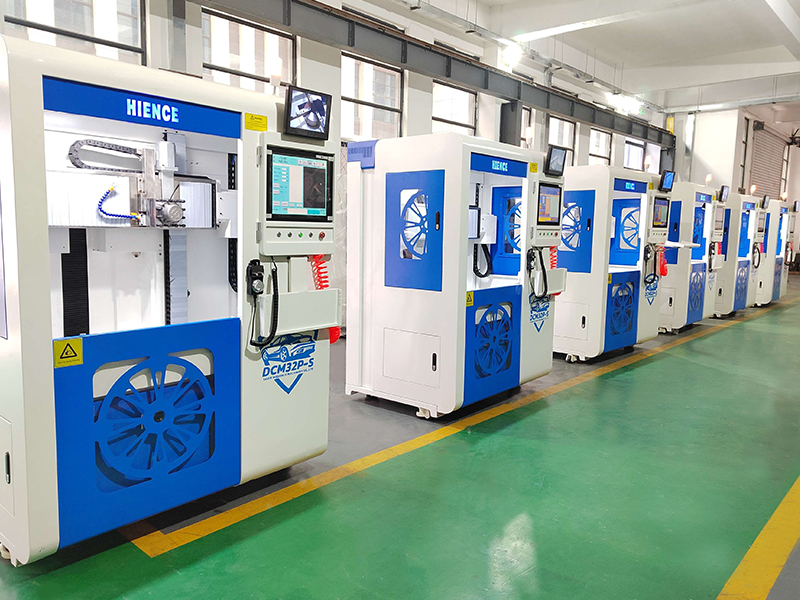Since we started the research and development and production of wheel repair machines in 2014, our wheel repair machines have gone through 4 major upgrades and countless detail upgrades so far, so that a more perfect wheel repair machine can be presented to current users. What upgrades have been made to our machines during this period, and what changes will be made to wheel repair machines in the future?
Based on the strong demand from the British market and customers, we officially began to join the R&D and production of the wheel repair machine industry in 2014. We first started production with the CNC version of the machine. Based on the structure of a heavy-duty CNC lathe, coupled with specially modified chuck claws and detection systems, as well as independently developed wheel repair CNC programs grafted on CNC, our first-generation wheel repair machine was born and quickly launched into the European and American markets. It has been widely recognized by users. I believe that if you are lucky, you will see someone using the machine we produced 10 years ago, and the machine is running very well.
As time went by when we joined this industry, we fully investigated the needs of our customers, summarized the shortcomings of similar models currently on the market, and began to develop new models. Because the vast majority of employees in wheel repair shops or car repair shops do not know CNC knowledge, and they need a machine that is simple to operate, our research and development goals were born. The PC version of the horizontal model AWR28HPC was produced, and this model has always existed and been purchased by everyone. The control system we developed is only for wheel repair, removing redundant buttons and steps, making the entire operation simpler, and also making it extremely easy for customers to learn after receiving the machine.
I believe you have seen our hot-selling vertical model DCM series. The AWR series products have advantages and disadvantages. The disadvantages are that they are too large, the wheel is more laborious to clamp, and observation during operation is not very convenient. Therefore, we started the research and development of the vertical model, and it is a completely new development. Because it is impossible to borrow the common vertical lathes on the market for processing metal parts as a basis, because traditional vertical lathes are still large in size, our R&D department started from scratch on castings, sheet metal, software control, etc. A new design and upgrade have been carried out, forming the first generation of vertical wheel models.
The wheel repair machines after the fourth upgrade are the DCM35P-MAX and DCM32P-S models currently displayed on the website. They have optimized the details of the product based on the previous generation product, making the product more beautiful, making the layout of the components more reasonable, and adding more functions that are conducive to convenient operation during the wheel hub repair process, such as: air cooling device, built-in air gun, surveillance cameras, etc.
The above four historical changes in our products will not only let you know more about our products, but also make you believe in our products and our company more, because we are a company that is proactive and serious about making products.
So what changes will there be in wheel repair machines in the future? We now have a direction. According to our market survey and research, customers need more rich wheel repair functions. some users need smaller models, and some users prefer horizontal models, so we will have more in the future. There is a lot of work to be done to make the machine more functional, to make the models more diverse, to make the operation easier, and to adapt to different customer needs, but our philosophy of making high-quality products will not change. I hope you will pay more attention to our company and products.

Keywords: wheel repair machine
Originally published 25 Jan 2024, updated 25 Jan 2024.